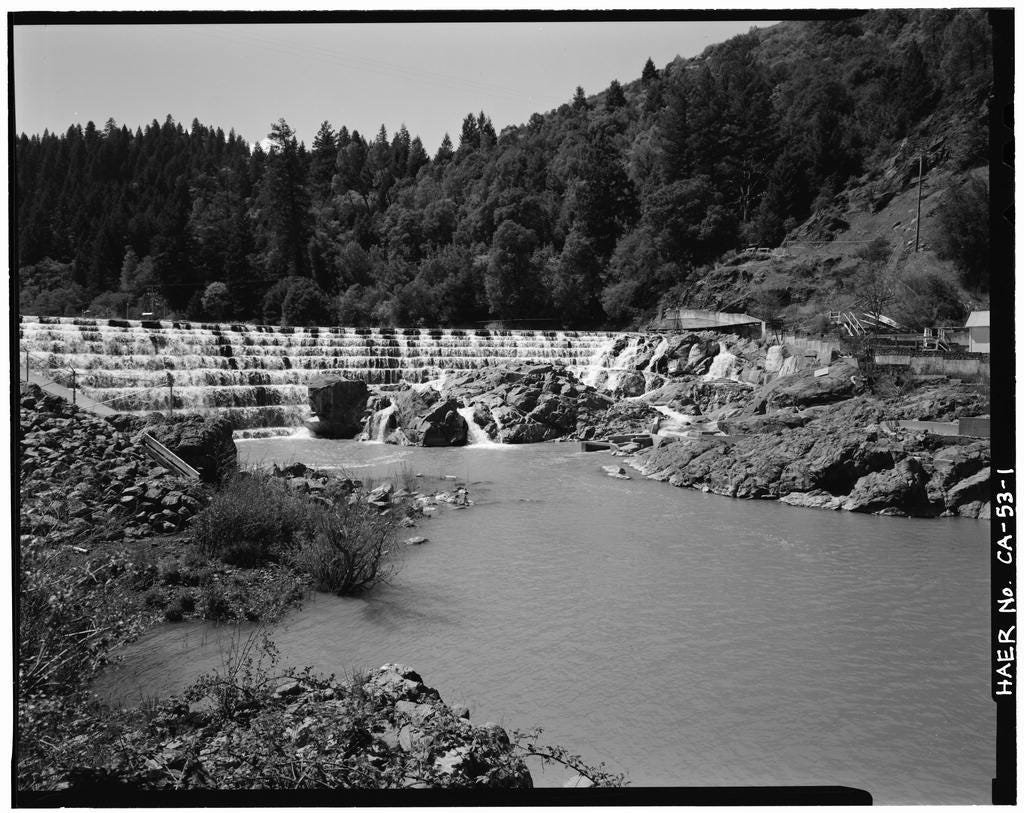'As I read this, I get chills.'
A path forward on decommissioning Eel River dams and river restoration.
Hello, and welcome to this Friday edition of Western Water Notes.
Keeping it short today. Will be back next week with more. Until then, enjoy the much-needed burst of precipitation we got over this past week. First rain in Las Vegas in 214 days.
As always, please reach out with any ideas, stories or feedback. If you appreciate these posts, please consider the monthly or paid subscriptions to make this project sustainable, and so I can keep posts free for all other readers. You can also support this newsletter by sharing on social media, forwarding these posts to friends or liking and commenting on Substack.
Cheers,
Daniel
In the coming years, another set of dams could be coming down in California along the Eel River, a move that would make the North Coast water body the longest free-flowing river in the state. It’s a piece of news that local groups have been working toward for years—and solidified this week with the signing of a detailed agreement.
For the past century, two dams and a diversion tunnel under the Potter Valley Project, have transferred water out of the Eel River Basin to the Russian River watershed, a source of conflict for local communities who have watched the infrastructure block salmon and steelhead from reaching critical spawning and rearing habitats.
Those dams, operated by Pacific Gas & Electric, could soon be coming down.
On Jan. 31, Pacific Gas & Electric filed a 2,086-page document to surrender its license with federal energy regulators, setting the stage for decommissioning and detailing what the cascading impacts could be of removing infrastructure that has stood for a century. That document can be accessed here on PG&E’s website. And Mendofever, a local news outlet, has a good article on it that summarizes some of the key points.
Two weeks after PG&E’s official filing, representatives of the state of California, the Round Valley Indian Tribes, local governments and environmental groups signed an important Memorandum of Understanding laying out a vision and framework for managing the two watersheds into the future while decommissioning the dams.
The Santa Rosa Press-Democrat reported on the signing:
“We’ve been here since the beginning of time, and we’ll be here until the end of time,” Round Valley tribal President Joseph Parker told the crowd. “Today marks the turning point, today and the rest of the river’s life.”
Michelle Bushnell, chairwoman of the Humboldt County Board of Supervisors, referenced a “painful history” in which water resources have been diverted out of Humboldt County for the benefit of neighboring counties without any input or consent of stakeholders in the northern county, one-third of which is in the Eel River watershed.
“As I read this, I get chills,” she said at the end of her statement. “It’s been a long time coming.”
The agreement (posted in full here) provides for the removal of two Eel River dams, aiming for 2028 to start decommissioning work, and offers a detailed framework for funding and restoring habitat for salmon and native fish on the Eel River.
The agreement also charts a path to meet continued water needs in the Russian River Basin by constructing a new diversion facility. The memorandum affirms the Round Valley Indian Tribes’ senior water rights, and plans to keep water not diverted in the Eel River. For continued diversions, Russian River users agreed to pay up to $2 million per year in compensation to the Round Valley Indian Tribes for water use and river restoration. A final deal on the future water diversion plan is still being negotiated.
The Cape Horn Dam, pictured in the first photo above and on the map, was finished in 1908, only six years after Congress passed the Newlands Reclamation Act. For more than a century, the dam and the project have been used to generate electricity and transfer water into a new basin. That legacy has created conflict and tension in ways that ripple out in so many different directions and touch many communities.
To me, the story is a reminder that all water issues are ultimately local, and it often takes years of engagement and conversation to address complex problems weighed down by century-old decisions to achieve a measure of “restorative justice.”
📰 For more reading on this, check out:
A few other stories before the weekend:
A new study in Science finds that heavy precipitation in Los Angeles helped fill surface reservoirs but deep groundwater aquifers remain depleted. (L.A. Times)
Despite the rain, Las Vegas is still facing significant drought (Review-Journal)
A story about San Francisco, surfers and the Clean Water Act (KQED)
Utah granted new Great Salt Lake water rights under exceptions to a moratorium, according to a Salt Lake Tribune analysis. Mostly for irrigation and stock water.
The Water Education Foundation looks at the effect of golden mussels.
Colorado courts are requiring the disclosure of data center water use.








This was a great news. I know this area pretty well and the Eel River has been suffering. Another dactiy is the Cannabis industry in the area which diverts water from springs and streams and which pollutes water courses from chemical and fertilizer turn-off.